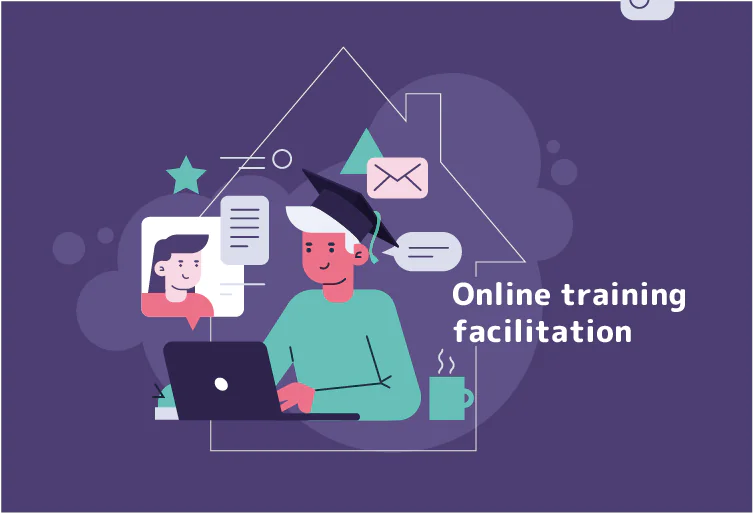Education through a screen has surged into every corner, from hybrid K–12 classes to executive retreats, yet with rapid growth comes fresh hurdles. How do you keep a youngster glued to a math lesson amid home distractions? How can a seasoned researcher wrestle with a theory without losing focus?
A vibrant learning environment fuels online learning effectiveness. Inject clear goals. Add interactive quizzes that snap learners to attention. Offer live support that feels like a friendly nudge rather than a cold helpdesk ticket. These moves do more than fill pixels as they elevate engagement, laying the groundwork for truly enhancing online education.
Distance learning often feels like shouting into the void. Faces reduced to pixels, instructors scramble to spark a connection and gauge who’s truly paying attention. Simply dropping slides online won’t cut it anymore. Check-ins that feel genuine, such as quick one-on-ones, surprise polls, and friendly nudges, can increase student engagement online by up to 60 percent.
After all, 71 percent of learners say they complete every assignment when they feel noticed, yet 83 percent admit boredom creeps in if the material falters. If you want real online learning effectiveness, weave trust into your rhythm and lean on smart virtual classroom strategies instead of hoping for the best.
A teacher’s warmth still outshines any line of code. Yet the right toolkit turns that spark into wildfire. Three-minute polls, breakout discussions, and real-time quizzes claim 76 percent of students agree they make sessions more memorable.
Swap hour-long reels for bite-sized clips and you’ll see viewing time climb by about 25 percent and exam scores inch up nearly 9 percent. These interactive online courses elements underline how enhancing online education isn’t about more content; it’s about remixing each module into something learners can’t ignore, a dynamic, living conversation rather than a distant monologue.
Strategy 1: Foster Interactive Learning Environments
Click, respond, react, reflect, then repeat. That’s the rhythm of learning when it moves beyond static slides and starts pulsing with real interaction. In any effort to improve online learning effectiveness, this shift matters more than most admit. After all, information without engagement is just digital noise, and nothing silences a learner faster than monotony.
First, let’s explore interactive online courses. These go far beyond flashy slides with buttons. They become dynamic learning ecosystems where students immerse themselves in the experience. Picture branching scenarios that change based on each choice, peer critiques that push thinking deeper, or quizzes that feel more like games than tests. Every element requires presence, not just mere attendance.
Who should build this? Anyone delivering learning at scale, for example, instructors, corporate trainers, or HR teams designing onboarding. But you don’t have to go it alone. Instructional design services bring expertise that turns rigid presentations into collaborative spaces: environments where learners are invited to think, share, reflect, and act (all within a secure virtual setting).
To spark higher student engagement online, try embedding:
- Live polls that surface understanding in real time
- Rapid-fire discussion “pods” in small breakout groups
- Branching case studies with clear consequences for each path
- On-the-fly whiteboards for head-to-head brainstorming
- Point or badge systems that reward every milestone
- Voice or video rounds enabling genuine peer feedback.
These are not gimmicks. They’re proven tactics. Each intervention interrupts passivity and puts learners in the driver’s seat, which is the first step in how to implement eLearning in an effective manner.
Yes, designing this level of interactivity takes intention and iteration. Uploading a PDF to a portal and calling it a course won’t cut it. But the payoff is real: a learning environment that does more than deliver content; it invites learners to reshape it, challenge it, and build new insights. That’s enhancing online education in action.
True learning sticks long after the test is over. With the right tools and thoughtful design, it’s fully within reach. When we rolled out our RG Gamification tool on a custom Open edX instance for a nationwide youth education initiative, passive slide decks transformed into truly interactive online courses.
Badges, point systems, and live leaderboards lured thousands of learners into friendly competition. Instant feedback popped up after every quiz, and in-course challenges adjusted in real time to each student’s progress. Completion rates soared, and genuine student engagement online became the new normal.
Strategy 2: Implement a Clear and Structured Course Design
Imagine your syllabus as a mosaic made of hundreds of tiny tiles, with each piece vital to reveal the grand image. That’s why online course design demands a crystal-clear plan. Nail down razor-sharp objectives first. Then carve your content into bite-sized modules (think five to ten minutes) so learners never feel lost and always chase that next “aha” spark. Small chunks sharpen focus and turn every click into a mini-victory.
Now sprinkle in instructional design for online learning magic. Draft storyboards that choreograph visuals, interactions, and quizzes before a single slide goes live. Uniform headers and buttons become familiar signposts, telling students exactly where to click.
Color-filled progress bars whisper, “You’re halfway there,” while scenario-based questions and clickable infographics (our favorite eLearning engagement techniques) morph passive scrolling into active exploration.
Practical moves to nail your structure:
- Kick off with crystal goals, e.g. “Module 1 teaches you to draft a project charter.”
- Sketch flows via a mind-map or digital storyboard for fast and flexible planning
- Limit each lesson to seven bites per hour; your brain will thank you
- Pick two fonts, three colors, and one button style, then stick to them
- Drop in “Checkpoint” polls or matching games after each segment
- Tease the next section with a headline question or a preview slide
- Close every unit with “Next Steps” hints so no one is left wondering
- Lean on digital learning tools, like embedded simulations or interactive PDFs, to reinforce the big ideas.
Combine this framework with proven virtual learning best practices, including consistent layouts, clear navigation cues, and prompt feedback, and watch confusion vanish. Learners stop asking, “What now?” and start thinking, “Wow, I get this.” That harmony between structure and surprise is the secret recipe for engagement that sticks.
For the European Bank for Reconstruction and Development’s Policy Academy, we crafted a series of precisely sequenced e-modules on an Azure-hosted Open edX platform. Every lesson began with clear objectives and ended with targeted assessments, reflecting sound online course design and expert instructional design for online learning.
“By breaking the EBRD Policy Academy into focused, 7-minute segments tied to explicit objectives, we saw knowledge retention climb by 25 percent and module drop-offs fall by 38 percent. That tidy structure, rooted in clear online course design and smart instructional design for online learning, turned vague ideas into steady progress and real confidence.” — Raccoon Gang’s EdTech Architect
Learners navigated a logical content map, demonstrated proficiency through scenario-based tasks, and enjoyed a consistent layout that boosted confidence and reduced drop-off.
Strategy 3: Utilize Effective Communication and Feedback Mechanisms
In a virtual classroom, the thin cord that keeps instructors and learners in sync is virtual classroom strategies. Think beyond typed replies: carve out clear channels, host surprise “pulse checks,” and punctuate lessons with genuine human moments.
When an educator lays out expectations, unpacks objectives, and welcomes every question, you shift from monologue to dialogue. Mix in remote teaching strategies like lightning-fast Q&A bursts, three-minute video updates, and email replies within the hour, so students know they’re never talking into the void.
Feedback delivered at warp speed powers eLearning engagement techniques. A returned assignment with crisp comments inside 24 hours can nip a misconception in the bud. Imagine flagging a recurring error on a worksheet, then tacking on a 120-second screencast that unpacks the fix. That tiny gesture turns frustration into momentum, and dropout risk plummets. In this world, every nugget of guidance, like praise or correction, becomes a rung on the ladder to true mastery.
Hands-on moves for sharper communication and feedback:
- Carve out weekly “open office” slots on video so help feels personal and live
- Drop a quick poll or thumbs-up check at lesson’s end to read the room immediately
- Swap canned text for brief voice notes on major assignments—tone matters
- Spin up peer-review circles within your LMS so classmates trade real-time critiques
- Automate milestone nudges and flag instructors when learners stall
- Publish weekly progress dashboards so each student steers their journey.
Pair these tactics with modern custom LMS development services that bake in automated checks and adaptive quizzes. Smart algorithms hand out instant results, spotlight common blind spots, and tweak question difficulty on the fly. The fusion of human coaching and machine insight means feedback scales as your audience swells.
Ultimately, crystal-clear communication and snappy, targeted feedback rewire the online learning path. Learners feel heard. Missteps get caught early. Motivation hums. Instead of a static slide deck, your course breathes, reacts, and guides each student toward real, measurable success.
When the ICNC needed more than just recorded lectures, we laid down robust virtual classroom strategies: daily discussion digests, custom Jitsi video rooms, and RG Analytics dashboards to surface who needed help. Notifications pinged learners via Telegram when they fell behind, and summary dashboards let instructors flag common missteps within hours. The blend of human coaching and automated insights turned simple content delivery into a two-way street of feedback, and retention climbed accordingly.
“We saw our average response time on the ICNC platform fall from four hours to under 45 minutes, and learner satisfaction climbed nearly 18 percent. When we coupled lightning-fast replies with adaptive quiz feedback, course completion rates jumped by more than 22 percent. This blend of rapid human touch and data-driven checks turned content delivery into a truly interactive experience.” — Raccoon Gang’s EdTech Architect
The Final Word
We’ve sketched three radical paths to supercharge online learning effectiveness. First, imagine courses that crackle with real-time polls, boss-level quizzes, and gamified quests, like interactive online courses that refuse to flatten curiosity. Then think of online course design so sharp it feels like a GPS for knowledge; each module a signpost, every objective crystal clear.
Finally, layer in virtual classroom strategies and instant feedback loops that transform isolation into connection. Stitch these together and you don’t just nudge online learner retention upward… you’re actively enhancing online education for every mindset.
Curious what this looks like at scale? Check Raccoon Gang’s Open EdX Services (where instructional design for online learning meets real-world grit). Contact us today!
| Strategy | What It Does | Key Benefit |
| Foster Interactive Learning Environments | Gamification, branching scenarios, live polls | Higher engagement and completion |
| Implement Clear & Structured Course Design | Defined learning paths, sequenced modules, and assessments | Reduced confusion and dropout |
| Utilize Effective Communication & Feedback | Scheduled check-ins, adaptive quizzes, and analytics | Faster correction and sustained motivation |




